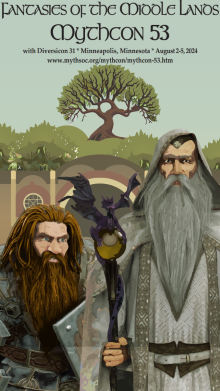Loading...
Location
Minneapolis, Minnesota
Document Type
Presentation
Event Website
https://www.mythsoc.org/mythcon/mythcon-53.htm
Start Date
5-8-2024 9:00 AM
End Date
5-8-2024 9:50 AM
Description
The dialectics of middle-ness is evident in various aspects of the novel The Two Towers by J.R.R Tolkien. It also includes the physical geography of Middle-earth, the character arcs of key protagonists, and the overarching struggle between good and evil. The paper follows textual analysis methodology. Geographically, the story unfolds in the region of Middle-earth known as Rohan, situated between the familiar landscapes of the Shire and Gondor. This middle ground becomes a crucial battleground in the war against Sauron, highlighting the strategic importance of this region in the larger conflict. At its core, middle-ness in The Two Towers reflects the idea of being in-between or at a pivotal point within a larger framework. The Two Towers reflects the complex moral and physical landscapes that the characters must navigate as they strive to overcome challenges and make choices that will shape the fate of Middle-earth. The novel is set in the middle of the larger part of Lord of the Rings trilogy, both chronologically and thematically. As it happens to be in the middle part of the trilogy, it serves as a bridge between the initial establishment of the quest to destroy the One Ring in The Fellowship of the Ring and the climactic resolution in The Return of the King. Significantly, this paper tries to explore the importance of middle-ness and also serves as a narrative device that underscores the complexity of the characters’ experiences and the overarching struggle between light and darkness. By exploring this concept, Tolkien crafts a compelling tale of resilience, sacrifice, and an enduring power of hope in the face of overwhelming odds.
Creative Commons License

This work is licensed under a Creative Commons Attribution-NonCommercial-No Derivative Works 4.0 International License.
Included in
Betwixt and Between: The Dialectics of Middle-ness in The Two Towers by J.R.R. Tolkien
Minneapolis, Minnesota
The dialectics of middle-ness is evident in various aspects of the novel The Two Towers by J.R.R Tolkien. It also includes the physical geography of Middle-earth, the character arcs of key protagonists, and the overarching struggle between good and evil. The paper follows textual analysis methodology. Geographically, the story unfolds in the region of Middle-earth known as Rohan, situated between the familiar landscapes of the Shire and Gondor. This middle ground becomes a crucial battleground in the war against Sauron, highlighting the strategic importance of this region in the larger conflict. At its core, middle-ness in The Two Towers reflects the idea of being in-between or at a pivotal point within a larger framework. The Two Towers reflects the complex moral and physical landscapes that the characters must navigate as they strive to overcome challenges and make choices that will shape the fate of Middle-earth. The novel is set in the middle of the larger part of Lord of the Rings trilogy, both chronologically and thematically. As it happens to be in the middle part of the trilogy, it serves as a bridge between the initial establishment of the quest to destroy the One Ring in The Fellowship of the Ring and the climactic resolution in The Return of the King. Significantly, this paper tries to explore the importance of middle-ness and also serves as a narrative device that underscores the complexity of the characters’ experiences and the overarching struggle between light and darkness. By exploring this concept, Tolkien crafts a compelling tale of resilience, sacrifice, and an enduring power of hope in the face of overwhelming odds.
https://dc.swosu.edu/mythcon/mc53/schedule/57


